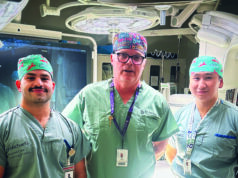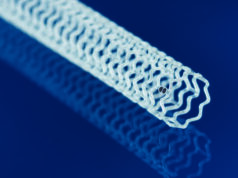
Proper integration of primary care physicians (PCPs) in the multidisciplinary care of vascular wounds is going to play an increasingly important role as the popularity of the team approach spreads, according to a leading voice in the treatment of peripheral arterial disease (PAD).
“I think the key is making sure we get to the patients early,” said Vincent Rowe, MD, chief of vascular surgery at the University of California Los Angeles (UCLA) in Los Angeles, in an interview with Vascular Specialist at VIVA 2023 (Oct. 30–Nov. 2), in Las Vegas. “We need to provide education so patients can understand how they can prevent these wounds, but we also need to educate the PCPs. Do we keep these patients in our care for a while, or do we send them back and hope that nothing else happens again? Those are going to be some of the keys in how we manage these patients.”
Rowe had just given a talk on patient-specific decisions and how to determine appropriate timing, resources and management of vascular wounds. He told Vascular Specialist how his institution had approached the multidisciplinary team approach to vascular wound care—one that involves the likes of podiatry, physical therapy, cardiology and interventional radiology in addition to vascular surgery and wound care specialists.
“I think [the multidisciplinary approach] is gaining popularity,” he said. “It’s making a difference in terms of how we manage the patients—and saving limbs. But sometimes different things get in the way: ego, logistics, and sometimes even money can all be barriers to having a successful program for these patients. I think at our center the biggest barrier was logistics in terms of space—and also ego. We were able to overcome these by meeting together, trusting each other and moving forward together, and we had a successful program.”
Once patients with vascular wounds reach such programs, reflected Rowe, these teams tend to successfully array resources to provide appropriate treatment. “But I think it is going to be [determining] the role of the other specialties like the PCPs—how are they going to be integrated? And we also need to educate the patient.”












